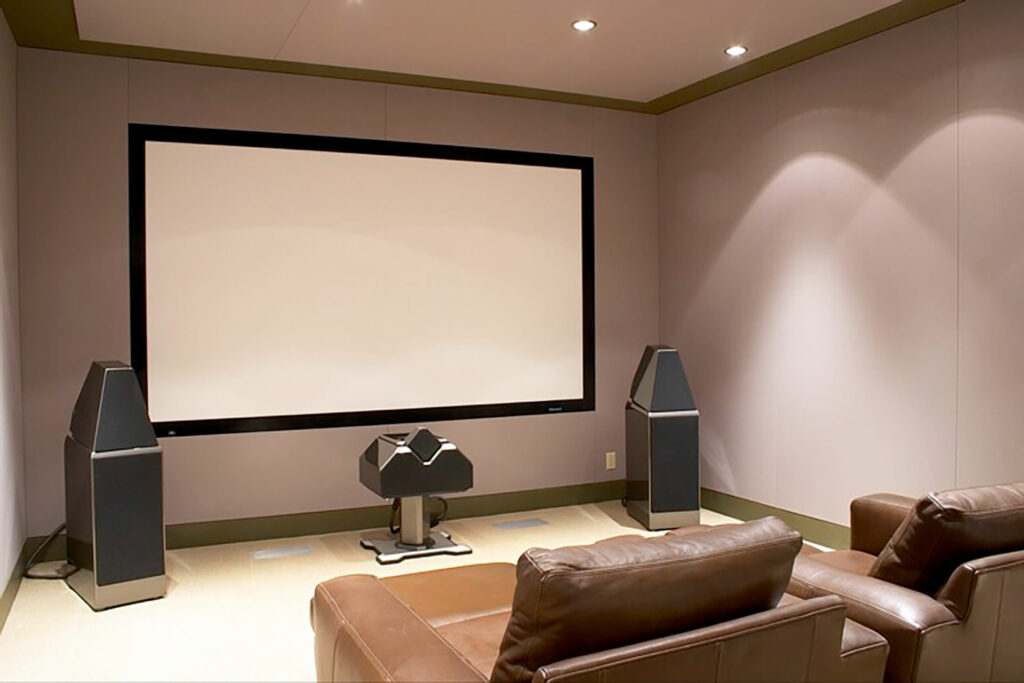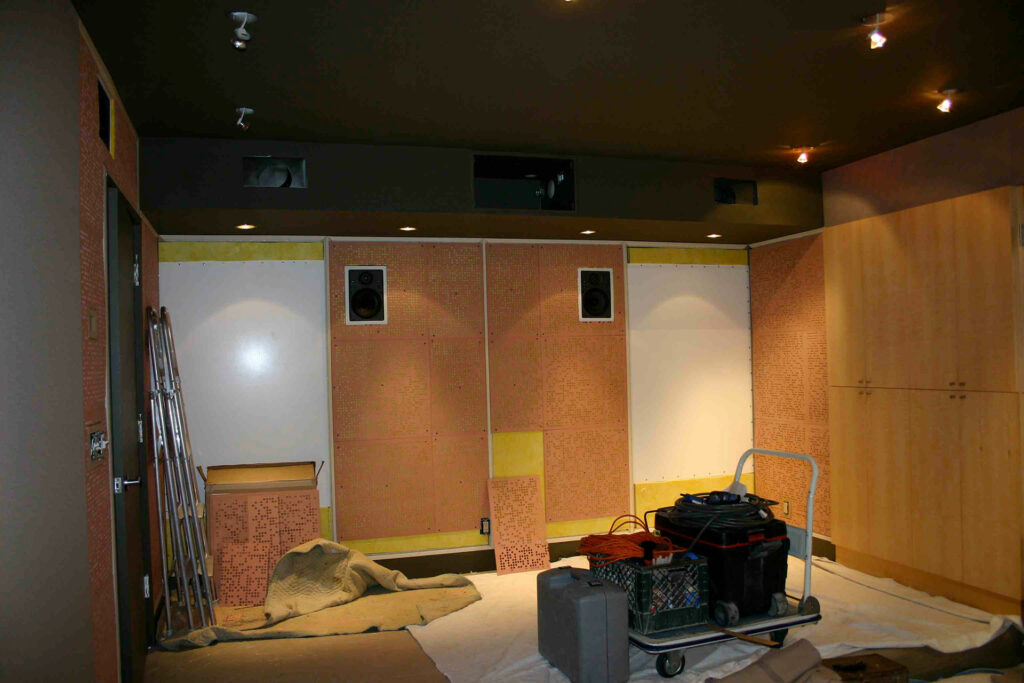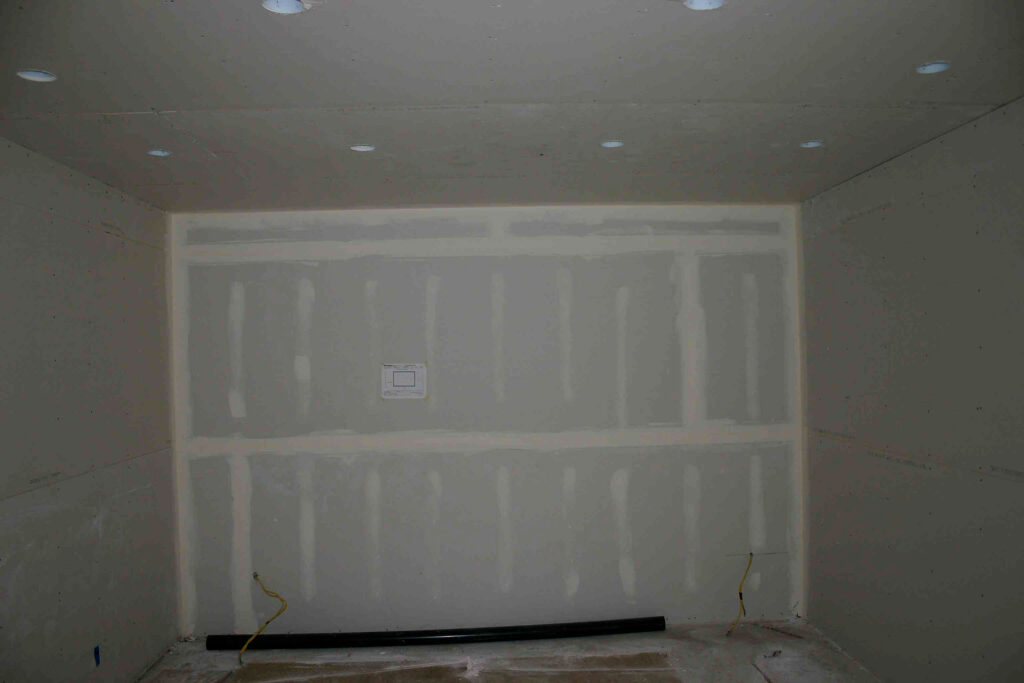A few years before COVID, I walked into a listening room at a CEDIA show in Denver for an audition of Wisdom Audio’s latest powered and room-corrected speakers. Calling it a room is a stretch, mind you, as these demo spaces are easily assembled and disassembled structures with little to no ability to keep sound of the outside world out. Noobs to the AV tradeshow world sometimes struggle with the concept of having to evaluate sound in less than perfect environments and this was clearly sub-optimal. The executives at Wisdom had very sophisticated, large format SPL (sound pressure meter) tools that measured a background noise of over 75 dB. Let me tell you that before the first note is played, the ambient sound of the ongoing CEDIA show outside was loud. Very loud. The doors closed and the music (and movies) played and you could hear what the speakers were doing but not in that mastering studio like, quiet environment. It was more like driving a very fast Ferrari in and out of rush hour traffic. It was exhilarating but less than perfect at the same time. When it comes to trade shows, lots of background noise is par for the course.

Why Do You Care to Reduce Background Noise in Your Audiophile System?
At home, background noise is much more avoidable and for those who work on this little-talked-about tweak, you can expect big gains. The delta in audiophile component’s performance is large at the start of one’s audiophile journey with more mainstream/affordable equipment. The difference between a $500 amplifier and a $1,500 unit can be night and day. What a $3,500 power amp brings to the table over the $1,500 amp is still significant but likely not anywhere near the same level of magnitude of positive change or upgrade. Go up to a $10,000 power amplifier investment and again you will get gains over the $3,500 amp, but you are starting to chase the Nth degree of performance. The difference in audible distortion in a Chi-Fi stereo preamp is quite low, as is the component’s asking price. The distortion measured in a $10,000 or higher preamp is almost inaudible.
Background noise in your listening room is a whole other, solvable audio issue, and often solvable at a reasonable price, and a room with less noise is going to sound better. The question is how can we get rid of some of this noise?

Where Does Background Noise Come from at Home?
There are a number of places that can generate noise, but each victory provides a small increment of excellence to your gear that is far less expensive but every bit as rewarding as dumping a ton of money into sexier audiophile gear. One place to attack for audiophile noise is your AC power. Yes, you can buck up for a power regenerator like those Powerplant AC regeneration devices made by PS Audio. You can run your gear, as I do, from battery backup, which also helps, but you could also call your electrician to run a dedicated 20-amp circuit or two for both your amps and your electronics. He or she can replace your outlets with hospital grade hardware or just make absolutely certain that your electrical solder points are perfect and not making any hum. An even bigger source of possible hum are your lights. I’ve got my issues with LED lights for their inability to dim perfectly, but they last for 30 years, are dirt cheap, and they rarely cause any background noise. If you take the time to hunt down just the right, higher end lighting fixtures you can get better lighting control as well as reduce your noise. $500 to $1,000 invested with your local electrician is a stunningly good value for an audiophile upgrade.
There are all sorts of physical things that you can do to reduce noise in your system that all make a positive change in your listening experience. The issue here is how involved do you want to get with construction mess and cost? If you are willing to rip up some drywall – a total mess, with dust that must be kept from all of your gear – expect some big gains. In past dedicated listening rooms I’ve worked on with some of the best acoustical designers in the business, I’ve done things like loaded the drywall gaps with pre-packaged ripped up denim. The material is so dense and dead that it eats up all sorts of ambient noise from other parts of your home. If you are going this route, be sure to also install bass traps in your walls using products like RPG’s Modex TM Plates, which also hide in the drywall bays. Like an ASC Tube Trap, they eat long, standing bass waves and automatically improve the bass performance of your room without any EQ, room correction, or tweaking. Bass waves aren’t background noise, but I couldn’t help but to suggest them if you are ripping up your room. Another awesome way to keep your sound in and other background sound out is to use a product like Quiet Rock, which is a double layer of drywall that is both sealed and attached with epoxy. The cost of doing this double-down solution is expensive compared to standard drywall, but for one room, it isn’t that expensive and allows you to rock out without waking up the wife or kids while blocking out other external sounds.
My mentor, Mark Levinson, was so next-level when it came to selling audio that it wasn’t even funny. Back in the mid-1990s, he was selling million-dollar-plus Cello Music and Film systems in Manhattan that were as much room acoustics as they were ultra-high-end audio. One of his favorite tricks was to install studio doors at the entrance of an audiophile listening room. These door systems use a set of two doors with a buffer space in between that create a tight barrier to outside sound that is simply fantastic. This isn’t an affordable solution whatsoever, but it works like a charm. Another solution that was incredible in Manhattan were windows that were triple-paned and gas-filled but also had thick wooden inserts (filled with something like sand) that when manually closed literally shut out the outside sound completely. As you closed these windows with their odd and heavy shade elements, the outside sound just dissolved to nothing. It was simply amazing. Often, with the right Park Avenue buyer, the sale was made right at that point, before a note was played as Mark was selling peace, calm, and art much more than some audiophile value proposition.

Want a Few More Affordable Solutions to Kill Off Audiophile Background Noise?
Your HVAC system can create a good amount of background noise when on. A super-cheap solution is to crank your AC at 66 degrees before a listening session and then turn the whole thing off. Your room won’t stay 66 degrees for long and that’s likely a good thing. A call to a higher end HVAC company and you can talk to them about ways to hush your system so that the rush of air is still there but the sound is gone. This isn’t crazy expensive, as it can likely be done with some duct work or perhaps a new vent for your listening room.
Moving your stack of audiophile gear to another part of your listening room, or better yet, to another room altogether is another excellent way to lower the background noise in a meaningful way. FutureAudiophile.com reviewer Andrew Dewhirst recently moved to a new home in Canada. He is able to install his gear on the other side of a wall so that it doesn’t physically mess with his center imaging and can make whatever noise it makes elsewhere. This is a double-win for him, but not every audiophile has a mechanical room or a secondary room for equipment. Just getting your gear moved from between your speakers can be huge for imaging purposes, but if you can get your gear away from you physically, that’s a big benefit too. We will take every little gain that we can get especially when they aren’t expensive or painful to accomplish.
Have you ever seen those track systems for fabric walls? My old installer used a system like this in my dedicated audiophile screening room at my old house in Brentwood (up the hill from OJ’s place), which worked great. For the handy audiophile, installing a fabric wall in your listening room can be a doable and somewhat affordable project. That was the room with the RPG Modex plates installed in the corners, but I also used a product from RPG called BAD TM Panels, which are like a big sheet of peg board that has foam on the backside and various size holes in the wood on the front. This serves as a bit of absorption as well as meaningful diffusion on your front wall. And all of it is easily hidden by your fabric wall that comes in custom colors, styles, and whatnot. Wanna hang a TV on the wall? No problem. Need to extend your AC power outlets? Also no problem. For $1,500 to maybe $3,000, you can make your room really slick with a fabric wall.

Nothing Will Get You Better Performance Than Improving Your Room’s Acoustics
There are so many ways that you can improve the sound of your gear and it isn’t always a new 32-bit DAC. Building a more solid acoustical foundation for your room is such a great way to get big gains from your current audiophile system as a pretty reasonable cost. Insulating sound into your listening room also is a benefit as you will be less likely to piss people off when blasting Rage Against The Machine at 110 dB at 1:00 AM, unless you’ve caulked your drywall gaps or installed some studio doors.
Consider looking at venues where you can find little acoustical gains that can make your current audio system sound better. These same changes will make the Nth degree of performance on much higher end upgrades make more sense too. While we likely will never truly be done upgrading our audiophile equipment until we take our last breath, don’t fall into the trap to think that said gear upgrades are the only way to the audiophile holy land. They are not. Work on your room at every level. Make it sound better. Make it look better. Install the gear in a cleanly and neatly. Choose seating that is for more than one listener (and invite other people to enjoy music with you, as it isn’t a solo hobby despite the cliché). Get your lighting system dialed in so that you have visual drama in your room as well as the ability to create a low-light mood that puts your sensory emphasis on your ears more than your eyes.
With one or two of these simple upgrades, you are on the road to big audiophile gains with hopefully not very much money invested or too much effort spent.




Building a basement audio room with QuietRock, acoustic putty around the electrical boxes, and solid-core gasketed doors gave me a super-quiet room, too. This was the biggest improvement I’ve made in my system in decades. It makes sense . . . to uncover more detail, reduce the background noise.
Jerry, I agree 1,000%!
I am SO JEALOUS of you having a basement.
In Southern California, they are SUCH A LUXURY.
In my last house, I wanted one but when the bid for grading and dirt removal + cement reached $1,000,000 – I gave up (and I had a LOT MORE MONEY back then:)
A quiet room is SO GOOD for making your audio live up to its potential.